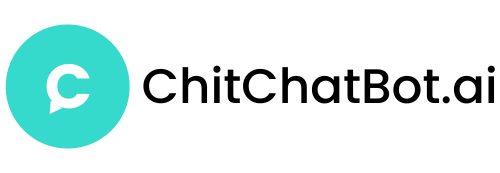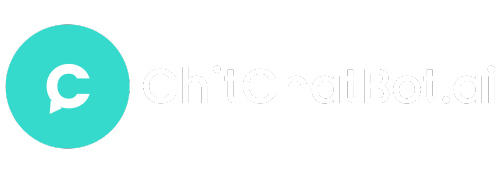Email vs. Messaging Apps (WhatsApp, Messenger, DMs) – Which is Better for Marketing

The Shift from Email to Conversational Marketing
Email marketing has been a digital marketing staple for decades, with businesses leveraging platforms like Mailchimp, Klaviyo, and ActiveCampaign to nurture leads and drive sales – by the way we are official ActiveCampaign partners and support integration with all major email platforms. According to recent data, email marketing still delivers an impressive 36 return for every 1 spent (Litmus, 2023), making it one of the most cost-effective channels available.
However, the way consumers communicate is evolving. Messaging apps like WhatsApp, Facebook Messenger, Instagram DMs, and SMS are growing at an unprecedented rate, offering higher engagement, faster response times, and better automation capabilities.
With over 3 billion people using messaging apps daily (Statista, 2024) and WhatsApp alone processing 100 billion messages per day, businesses that ignore conversational marketing risk losing out to competitors who engage customers in real-time.
But does this mean email is dead? No—but it does mean marketers need a hybrid approach.
In this deep dive, we’ll compare email vs. messaging apps across key marketing metrics, explore the latest automation tools, and reveal how top brands are combining both for maximum impact.
1. Targeting & Audience Reach
Email Marketing: Reliable but Limited
Email marketing relies heavily on first-party data—subscriber lists collected via opt-ins, lead magnets, or past purchases. While segmentation tools (like Klaviyo’s AI-driven workflows) allow for hyper-targeted campaigns, email has three key limitations:
Declining Match Rates – When uploading customer lists to email service providers (ESPs), match rates typically range between 60-80%, meaning 20-40% of your audience may never see your emails.
Spam Filters & Deliverability Issues – Gmail and Yahoo’s 2024 bulk sender rules have made it harder for promotional emails to reach the inbox.
Cold Email is Nearly Dead – With stricter GDPR & CAN-SPAM laws, buying email lists is riskier than ever.
Messaging Apps: Higher Accuracy & Direct Access
Messaging apps solve many of email’s biggest problems:
WhatsApp Business uses phone numbers, ensuring 90%+ match rates when uploading customer lists.
Facebook & Instagram Messenger allow businesses to retarget users who’ve interacted with their ads or pages.
Click-to-Message Ads let brands initiate conversations directly from social media ads.
Chatbot Automation (chitchatbot.ai) enables personalized drip campaigns based on user behavior.
Winner: Messaging Apps – Better opt-in accuracy, fewer spam issues, and direct access to customers.
2. Engagement & Conversion Rates
Email: Steady but Declining
Email’s biggest advantage is its long-form content capability, making it ideal for newsletters, product launches, and educational campaigns. However, engagement metrics tell a concerning story:
Open Rates: 15-25% (industry average, down from ~30% a decade ago).
Click-Through Rates (CTR): 2-5% (lower due to inbox overcrowding).
Response Rates: <1% (most emails are one-way broadcasts).
Automated sequences (e.g., abandoned cart emails) still perform well, but cut-through is harder than ever.
Messaging Apps: Unmatched Interaction
Messaging apps dominate engagement metrics:
| Metric | WhatsApp / Messenger | |
|---|---|---|
| Open Rates | 15-25% | 80-98% |
| CTR | 2-5% | 20-60% |
| Response Rate | <1% | 30-50% |
Why such a huge difference?
Mobile-First Experience – 90% of messaging app usage is on smartphones, where notifications are instant.
Two-Way Conversations – Users can reply naturally, unlike email (which feels transactional).
Rich Media Support – Send videos, quick replies, payment links, and AI chatbots.
Automated Sequences – Abandoned cart reminders on WhatsApp have 3X higher recovery rates than email.
Winner: Messaging Apps – Higher engagement, faster responses, and better conversion potential.
3. Platform Awareness & User Behavior
Email: Still Dominant (But Stagnant)
4.4 billion email users worldwide (Radicati, 2024).
333 billion emails sent daily—competition is fierce.
Best for B2B, formal communication, and long-term nurturing.
Messaging Apps: The Future of Communication
WhatsApp: 2.8 billion users, with 100 billion daily messages.
Facebook Messenger: 1.3 billion users (integrated with Instagram DMs).
SMS: 6 billion+ phones—great for older demographics.
Gen Z & Millennials prefer messaging over email for brand interactions.
Winner: Messaging Apps – Higher daily usage and better alignment with modern consumer habits.
4. Automation & Scalability
Email Automation: Powerful but Limited
Tools like ActiveCampaign allow for:
Behavioral triggers (e.g., abandoned cart emails).
Drip campaigns (onboarding sequences).
AI-driven personalization.
Limitations:
Still feels impersonal.
Slow response times (email isn’t real-time).
Messaging App Automation: The Game-Changer
Chatbots and AI-powered messaging tools (ChitChatbot.ai) enable:
24/7 instant replies (e.g., order tracking via WhatsApp).
AI-powered shopping assistants (like those used by H&M and Sephora).
Payment integrations (Stripe, PayPal in Messenger).
Seamless handoff to human agents when needed.
Example: A travel agency using WhatsApp automation can:
Send personalized trip recommendations.
Process bookings via chat.
Automatically send e-tickets & updates.
Winner: Messaging Apps – More dynamic, interactive, and scalable for real-time sales.
5. The Future: Omnichannel Marketing (Email + Messaging + SMS)
The most successful brands don’t choose between email and messaging—they use both strategically.
How to Combine Them for Maximum Impact
Lead Capture → Collect emails & WhatsApp opt-ins simultaneously.
Cart Abandonment → Send an email + WhatsApp reminder (2X recovery rate).
Customer Support → Chatbot first, then email follow-up for complex issues.
Promotions → SMS/WhatsApp for urgency, email for detailed offers.
Final Verdict: Which Should You Prioritize?
Stick with Email If…
✔ Your audience is B2B or older demographics.
✔ You need long-form content delivery (newsletters, whitepapers).
Shift to Messaging Apps If…
✔ You want higher open & click-through rates.
✔ Your customers are Gen Z / Millennials.
✔ You need real-time sales & support (e-commerce, SaaS, services).
The Best Strategy?
Use email for nurturing, messaging apps for conversions, and automation to bridge the gap.
Key Takeaways
✅ Messaging apps (WhatsApp, Messenger, SMS) have 4-8X higher engagement than email.
✅ Chatbots & AI are making messaging automation smarter than ever.
✅ The future is omnichannel—combine email + messaging for the best results.
✅ Brands that ignore WhatsApp & DM marketing will lose to competitors who adopt it.

